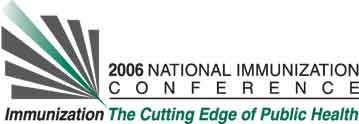Marianne M. Koshak, Immunization Program, Colorado Department of Public Health and Environment, DCEED-IMM-A4, 4300 Cherry Creek Drive South, Denver, CO, USA, Lane Wake, DCEED, Immunization Program, Colorado Department of Public Health and Environment, 4300 Cherry Creek Dr S, Denver, CO, USA, and Rosemary Jean Spence, Colorado Department of Public Health and Environment, DCEED IMM A4 4300 Cherry Creek Drive South, Denver, CO, USA.
Learning Objectives for this Presentation:
1. Describe how GIS can prioritize recruiting efforts for Vaccines for Children (VFC) providers.
Background:
To focus VFC provider recruitment efforts in underserved areas in Colorado, a GIS was used to identify areas with low VFC provider enrollment relative to the VFC eligible population. Typically, provider shortage areas are calculated for discrete geographic areas such as counties. This does not account for provider service areas that overlap county boundaries and does not indicate where shortage areas are located within a county. GIS buffer analysis can estimate the distance between providers and the population they serve to identify provider shortage areas.
Objectives:
Identify geographic areas in Colorado underserved by VFC providers.
Methods:
The locations of Colorado's VFC providers were geocoded and mapped. U.S. Census data for the number of children living under 200% federal poverty level (FPL) by census tract was used to approximate the location of Colorado's VFC eligible population. The census data were mapped to the population weighted centroid of each census tract. Circular buffers incrementally increasing from 5 miles to 125 miles were generated around each centroid. The number of VFC providers and the sum of the population falling within each buffer were calculated. The ratio of VFC providers to population was calculated for each tract. Tracts that had low ratios with high populations were identified as VFC shortage areas.
Results:
457 of Colorado's 1062 census tracts were identified as VFC shortage areas. 121 physicians' offices that give childhood immunization, not currently enrolled in VFC, are located in target areas prioritized for recruitment.
Conclusions:
GIS can be used to identify populations underserved by VFC providers. VFC provider recruitment efforts can be prioritized to these areas at most need.
See more of Posters
See more of The 40th National Immunization Conference (NIC)

